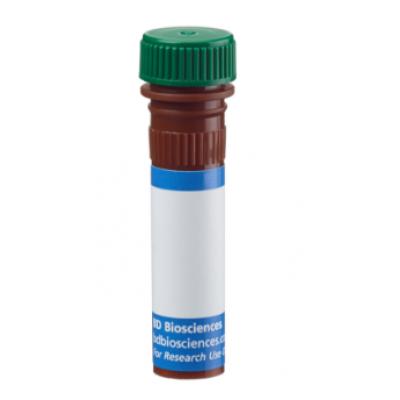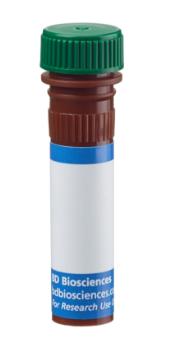Brand
BD Pharmingen™
Alternative Name
CR2/CR1
Concentration
0.5 mg/ml
Isotype
Rat SD, also known as Sprague-Dawley (outbred) IgG2b, κ
Reactivity
Mouse (QC Testing)
Application
Flow cytometry (Routinely Tested)
Fluorescence microscopy (Reported)
Immunogen
Purified Mouse CR1
Storage Buffer
Aqueous buffered solution containing ≤0.09% sodium azide.
DESCRIPTION
The 7G6 antibody recognizes an epitope shared by 145-150-kDa and 190-kDa complement receptor proteins, originally designated CR2 (CD21) and CR1 (CD35), respectively. In the mouse, CD21 and CD35 are expressed on the majority of peripheral B lymphocytes, on the majority of resident peritoneal macrophages and mast cells, on peripheral blood granulocytes after treatment with N-formyl-Met-Leu-Phe, and on follicular dendritic cells, but not on thymocytes, T cells, erythrocytes, or platelets. CD21 is a ligand-binding component of the CD19/CD21/CD81 signal-transduction complex associated with the antigen receptor on B lymphocytes. CD21/CD35 also co-localizes with CD19 on the surface of peritoneal mast cells.Cr2null mice display impaired inflammatory and humoral immune responses in vivo. The 7G6 mAb has been reported to inhibit rosette formation by C3d-bearing sheep erythrocytes, to block the complement dependent trapping of immune complexes by follicular dendritic cells, and to down-regulate mouse CD21/CD35 expression upon in vivo application, thus inhibiting primary antibody responses to immunization. Co-stimulation of B-cell differentiation via Sepharose-coupled 7G6 antibody has also been observed. The 7G6 mAb recognizes an epitope on CD35 distinct from the epitope recognized by anti-mouse CD35, clone 8C12 (Cat. No. 558768, for the purified antibody), and it does not block binding of 8C12 mAb to mouse CD35.
FORMAT

FITC, fluorescein isothiocyanate, is a fluorochrome with a molecular weight of 389 Da. FITC is sensitive to pH changes and photobleaching. Due to nearly identical excitation and emission properties but different spillover characteristics, FITC and Alexa Fluor® 488 cannot be used simultaneously. FITC is relatively dim and should be reserved for highly expressed markers whenever possible.

 010-64814275
010-64814275
 當前位置:
當前位置:





 010-64814275
010-64814275
 010-64814275
010-64814275
 2850669802
2850669802